Paint Spray Hose (Steel Wire Core) — Technical Specification, Applications, and Installation Guide
The Paint Spray Hose (Steel Wire Core) is a heavy‑duty, reinforced hose engineered for demanding industrial painting and coating operations. Combining a steel wire core with a wire‑braid reinforcement and a chemically resistant rubber compound, this hose family delivers exceptional mechanical strength, abrasion and oil resistance, antistatic properties, and a wide operating temperature range (−40°C to 100°C). It is optimized for delivery of paints, varnishes, solvents and thinners at the pressures encountered in spray booths, airless sprayers and automated paint systems.
Introduction
Industrial painting and coating operations require fluid delivery components that are not only compatible with aggressive chemistries but also retain mechanical integrity under repeated flexing, pressure cycling and abrasive environments. The Paint Spray Hose (Steel Wire Core) addresses these needs by integrating a steel wire core for axial strength and pressure containment with a braided steel reinforcement for improved burst performance and abrasion resistance. The design also incorporates conductive/antistatic features to reduce static build‑up during high‑velocity fluid transfer — a critical safety attribute for solvent‑borne systems.
This article provides an in‑depth technical overview of the product, key material and design considerations, tabulated specifications and dimensional data, practical use cases, comparative analysis with alternative hose constructions, and professional maintenance and installation guidance for long‑term, safe operation.
Technical Overview
The Paint Spray Hose (Steel Wire Core) is a reinforced elastomer hose configured for the conveyance of paints, lacquers, coatings and thinners. The core construction consists of a helical steel wire (the “steel wire core”) located inside the inner bore; this core provides internal structural support and resists collapse under vacuum and bending. Surrounding the steel core is a braided steel‑wire reinforcement layer, which increases burst strength and limits elongation under pressure. An oil‑resistant inner tube compound is extruded directly over the core, and an abrasion‑resistant outer cover is vulcanized to the braid to provide environmental protection and chemical resistance.
Key functional attributes:
- Pressure containment: The steel core and braided reinforcement deliver high working and burst pressures suitable for airless spraying and high‑pressure coating systems.
- Chemical resistance: Inner tube compound formulated to resist a broad range of paints, solvents and thinner formulations.
- Abrasion and wear resistance: Robust outer cover resists scuffs, cuts and general abrasion found in industrial environments.
- Antistatic behavior: Conductive elements embedded in the construction reduce static generation and allow dissipation to ground when connected properly.
- Flexibility and bend control: Despite the steel core, the hose is engineered for a practical minimum bend radius suitable for hand‑held spraying and automated applications.
Typical Applications
- Airless paint spraying systems (industrial and commercial)
- Automotive and aerospace paint booths
- Industrial coating lines and robotic spray arms
- On‑site maintenance painting and solvent transfer
- High‑pressure operations where antistatic protection is required
Models and Core Specifications
The product family is available in multiple nominal sizes. Two representative models and their nominal technical values are shown in the table below. Manufacturers may supply additional sizes and custom lengths; verify with the vendor datasheet for precise dimensional tolerances and certification data.
| Model | Inner Diameter | Outer Diameter | Maximum Working Pressure | Burst Pressure | Minimum Bend Radius | Temperature Range | Weight (per m) |
|---|---|---|---|---|---|---|---|
| 3300‑04 | 1/4″ (≈6.35 mm) | 12.4 mm | 420 kgf/cm² (≈41.2 MPa / 5,978 psi) | 1,300 kgf/cm² (≈127.8 MPa / 18,515 psi) | 60 mm | −40°C to 100°C | 140 g/m |
| 3300‑06 | 3/8″ (≈9.53 mm) | 15.4 mm | 320 kgf/cm² (≈31.4 MPa / 4,555 psi) | 1,000 kgf/cm² (≈98.1 MPa / 14,223 psi) | 80 mm | −40°C to 100°C | 210 g/m |
Note on conversions: 1 kgf/cm² ≈ 0.0980665 MPa ≈ 14.223 psi. Values show working pressure (service pressure) and burst pressure (rupture pressure) as provided by the manufacturer. The high burst pressures reflect the steel wire core and braid construction; always apply the manufacturer’s recommended safety factor when selecting hose for a pressure system (typical design safety factor for hydraulic hoses is 3:1 to 4:1, but verify for paint/airless systems).
Materials and Build Quality
A successful spray hose must marry chemical compatibility with robust mechanical construction. The Paint Spray Hose (Steel Wire Core) uses a layered construction combining elastomeric chemistries and metal reinforcements. Below is a breakdown of typical materials, their roles and the technical advantages they confer.
Inner Tube
The inner tube is a solvent‑resistant elastomer. Many manufacturers use nitrile rubber (NBR), hydrogenated nitrile (HNBR) or specialized solvent‑resistant compounds formulated to withstand paints, varnishes, solvents, thinners and cleaning agents. Key properties:
- Low permeability to hydrocarbon solvents
- Resistance to swelling, softening and loss of mechanical integrity on exposure to common thinners
- Good abrasion resistance on the inner surface to limit particulate generation
Steel Wire Core
The helical steel wire core — typically made from high‑tensile carbon steel or stainless steel in corrosive environments — provides axial rigidity and collapse resistance. The core:
- Prevents the hose from kinking around small diameters
- Enables very high axial pressure containment combined with the braided reinforcement
- Serves as a continuous conductive path for static dissipation when properly grounded
Wire‑Braid Reinforcement
A braided steel layer, often multiple plies depending on size and pressure rating, increases burst strength, reduces elongation, and improves cut‑through and abrasion performance. Advantages include:
- Uniform distribution of hoop stresses under internal pressure
- Improved fatigue life under cyclic pressure loading
- Enhanced external mechanical protection under abrasion
Outer Cover
The outer cover is a synthetic rubber compound formulated for oil, abrasion and UV resistance. Typical cover characteristics:
- Shore A hardness in the range of 60–75 to balance wear resistance and flexibility
- Good resistance to scuffing and surface cuts in industrial environments
- UV and ozone resistance for moderate exposure areas (not intended for prolonged sunlight exposure without protection)
Antistatic/Conductive Elements
Antistatic performance is achieved by incorporating conductive pathways — either via the steel core itself, conductive fibers in the braid, or embedded conductive strips in the compound. Proper function requires metallic continuity to ground through fittings or clamps. The design minimizes charge accumulation when pumping low‑conductivity solvents at high velocities.
Manufacturing and Quality Assurance
Key manufacturing steps include precision extrusion of the inner tube around the steel core, controlled braiding of reinforcement layers, outer cover extrusion and vulcanization (curing). Quality assurance typically includes:
- Dimensional inspection (ID, OD, wall thickness)
- Hydrostatic pressure testing to validate burst performance
- Electrical continuity/resistivity checks for antistatic verification
- Chemical compatibility and swelling tests with representative paints/solvents
Key Features
The Paint Spray Hose (Steel Wire Core) is engineered with features that address both operational performance and safety in spray applications. These are highlighted below:
- Steel wire core: Prevents kinking and maintains internal passage integrity under bending and cyclic loads.
- Wire‑braid reinforcement: Increases burst pressure, reduces elongation, and improves fatigue resistance.
- Oil and solvent resistance: Inner tube compounds specifically formulated to resist paints, solvents and thinner chemistries.
- Antistatic capability: Inline conductive path reduces static build‑up; intended to be grounded during use to meet safety practices for flammable solvents.
- Wide temperature range: Continuous operating range from −40°C to 100°C for use in a variety of ambient conditions.
- Compact bend radius: Minimum bend radii (60 mm for 1/4″, 80 mm for 3/8″) enable installation in confined spaces and mounting to portable spray guns.
- Abrasion resistant outer cover: Durable in shop and plant floor environments, minimizing external wear and extending service life.
Use Cases and Industrial Applications
This hose is suited to a broad set of paint and coating delivery scenarios. Below are example use cases that highlight where the steel wire core variant provides tangible benefits.
1. Airless Spraying in Automotive and Heavy Equipment Plants
Airless spray systems operate at high pressures and require hoses that can withstand cyclic loading without fatigue failure. The high working and burst pressures with steel‑wire reinforcement make these hoses appropriate for airless sprayers feeding production line painting robots or manual guns. Antistatic properties are important when using solvent‑borne paints to reduce electrostatic hazards.
2. Robotic Spray Arms in Automated Lines
Robotic arms require hoses that can flex repeatedly without kinking or prematurely wearing. The steel core prevents collapse under repeated motion, while the braid preserves geometry at elevated pressures. Minimum bend radius and weight per meter are critical when calculating robot payload and reach; the 3300 series offers a compact profile with reasonable mass for robotic installations.
3. On‑site Coating and Maintenance
Portable spray rigs and mobile painting units benefit from hoses that tolerate rough handling and exposure to solvents used in the field. The outer cover resists abrasions from contact with scaffolding and surfaces; the hose can be coupled to common spray fittings for quick deployment and retrieval.
4. Industrial Booth and Line Transfer Applications
In paint booths and conveyorized coating lines where throughput demands consistent flow and pressure, these hoses support steady delivery and minimize downtime associated with hose failure. Antistatic dissipation is critical in enclosed booths where solvent vapors and aerosols concentrate.
Comparison with Alternative Hose Types
Selecting the correct hose requires trade‑offs among pressure rating, chemical compatibility, flexibility, weight and cost. The table below compares the steel‑wire core paint spray hose to common alternatives: textile‑braided rubber spray hoses, PVC spray hoses, and PTFE hoses with stainless‑steel braid.
| Attribute | Steel Wire Core + Wire Braid (This Product) | Textile‑Braid Rubber Hose | PVC/Plastic Spray Hose | PTFE Lined + SS Braid |
|---|---|---|---|---|
| Maximum Working Pressure | High (320–420 kgf/cm² typical) | Moderate (10–40 MPa typical) | Low (≤10 bar typical) | Moderate to high (depending on braid; 20–40 MPa) |
| Burst Pressure | Very high due to steel core and braid | Moderate | Low | High |
| Flexibility / Minimum Bend Radius | Good for size (60–80 mm) | Best flexibility (smaller bend radii) | High flexibility but poor chemical resistance | Less flexible, stiff at small diameters |
| Chemical Compatibility | Good for paints and most solvents | Good (depends on compounds) | Poor for solvents; good for waterborne | Excellent for aggressive solvents and corrosives |
| Abrasion Resistance | High | Moderate | Poor | Moderate to high |
| Antistatic Capability | Standard (steel provides conductivity) | Optional (carbon yarns required) | Rare / not conductive | Can be provided via braid; PTFE is insulating |
| Typical Use Cases | High‑pressure airless spray, robotic arms | Low‑mid pressure spray, general purpose | Low pressure waterborne spray | Critical chemical service, high purity |
Summary: The steel‑wire core hose is best where high working and burst pressures, antistatic dissipation and abrasion resistance are required. PTFE‑lined hoses are superior for aggressive chemistries and contamination‑sensitive processes, but they are heavier and less flexible. Textile‑braid hoses are lighter and more flexible but offer lower burst pressure and lower antistatic performance unless specially engineered.
Benefits and Limitations
Benefits
- High mechanical strength: Capable of withstanding high working and burst pressures encountered in airless and high‑flow spraying.
- Excellent chemical resistance: Inner tube compounds are formulated for paints, solvents and thinners.
- Improved safety: Antistatic characteristics reduce the risk of electrostatic ignition when properly grounded.
- Durability: Abrasion‑resistant outer cover and steel braid extend service life in industrial environments.
- Service temperature range: Broad operating temperature range enables use from cold environments to elevated workshop temperatures.
Limitations
- Weight: Steel core and braid increase mass per meter compared to textile‑reinforced hoses, which can be a factor for long hose runs or robotic payload limits.
- Flexibility limits: While engineered to have a practical bend radius, the steel core is less flexible than textile core hoses, which can limit routing in very tight spaces.
- Cost: Steel reinforcement typically raises unit cost relative to simple textile‑reinforced hoses or PVC hoses.
- Potential corrosion risk: If carbon steel wire is used and the outer cover is breached, internal corrosion can occur in wet or corrosive environments unless stainless steel options are specified.
- Electrical continuity required for safety: Antistatic functionality depends on proper grounding; without correct installation, static mitigation may be ineffective.
Installation, Selection and Mounting Guidance
Selecting and installing a paint spray hose for an application requires attention to mechanical, chemical and safety parameters. The following guidance provides engineering best practices to maximize performance and safety.
Pressure and Safety Margin
- Design systems so that the maximum working pressure does not exceed the hose’s rated working pressure. Apply a conservative design safety factor: many industries adopt a minimum 3:1 ratio of burst-to-working pressure for general service; high‑risk environments may require higher safety margins.
- Consider pressure spikes generated by pumps and actuators. Use pressure dampeners or surge suppressors if transient pressures approach the hose working limit.
Fittings and Couplings
- Use fittings rated for the hose’s maximum working pressure and compatible with the hose material and delivered fluid. Stainless steel couplings are recommended for solvent service and corrosive environments.
- Ensure fittings maintain metallic continuity to the hose braid/core to support proper antistatic grounding unless the system uses a separate grounding conductor.
- Follow the manufacturer’s recommended crimping or swaging instructions; improper coupling installation is a leading cause of hose failure.
Routing and Bend Radius
- Respect the minimum bend radius (60 mm for 3300‑04 and 80 mm for 3300‑06). Exceeding the minimum bend radius can cause kinks, increased internal stress and reduced service life.
- Provide smooth routing without sharp bends or tight clamps. Use protective cable carriers or hose guides where the hose passes through openings or around pulleys.
Grounding and Antistatic Practices
- Verify electrical continuity from hose end to end with a low‑resistance meter. The hose should present a low resistance path as specified by the manufacturer (consult datasheet for target ohm values).
- Install grounding clamps or bonding straps to connect the hose braid/core to the facility earth ground at both ends where required by safety regulations or paint supplier recommendations.
- When handling flammable solvent‑borne paints, follow local and international standards for static management (e.g., bonding/grounding practices). The hose provides a conductive path but must be used in conjunction with system grounding.
Length and Pressure Drop Considerations
- Longer hose runs increase pressure drop and can reduce flow rate at the spray gun. Choose the largest practical inner diameter for long runs to minimize frictional losses.
- When working near the maximum working pressure, calculate pressure drop to ensure adequate nozzle pressure at the spray head. Manufacturers or fluidic engineers can provide pressure‑loss curves for the hose size and fluid viscosity.
Maintenance and Care Guide
Regular inspection, proper cleaning and preventive maintenance extend hose life, maintain safety and reduce unplanned downtime. Below are professional, actionable maintenance recommendations for the steel wire core paint spray hose.
Daily/Pre‑Use Checks
- Inspect the entire visible length for cuts, abrasions, crushed sections, pinches or bulges in the outer cover.
- Verify fittings and couplings are secure with no signs of slippage or deformation.
- Check electrical continuity and bond/ground connections where antistatic function is required. Use an ohmmeter to verify low resistance path per manufacturer guidance.
- Confirm that minimum bend radii are being respected during operation and storage.
Periodic Maintenance
- Carry out hydrostatic or pneumatic pressure testing per schedule set by the facility or hose manufacturer, taking care to follow safe testing practices and to ensure hoses are rated for the test pressure applied.
- Inspect the internal bore for contamination buildup, particulates or liner degradation using appropriate borescope tools when feasible.
- Replace hose assemblies immediately if there are signs of internal core failure (e.g., metallic fragments in delivered fluid, audible scraping or unusual pressure fluctuations).
Cleaning Procedures
- Flush the hose after use whenever changing paint types, colors or when solvents used could cause cross‑contamination. Use recommended solvent flushes compatible with the hose lining material.
- Avoid prolonged exposure to aggressive cleaning agents that exceed the specified chemical compatibility of the inner tube. Consult solvent compatibility charts and the hose vendor for specific guidance.
Storage Recommendations
- Store hoses away from direct sunlight, sources of ozone and extreme temperatures when not in use. Although rated to 100°C, prolonged exposure to high temperatures can accelerate aging.
- Coil hoses loosely without tight bends and support them to prevent crushing or kinks. Use rack supports or reels for long lengths.
- Avoid contact with oils, greases or chemicals not compatible with the outer cover compound to prevent softening or degradation.
Replacement Criteria
Replace hose assemblies under any of the following conditions:
- Visible ruptures, major abrasions or gouges that expose reinforcement layers.
- Any sign of delamination between layers, interior lining softening or blistering.
- Loss of electrical continuity (if antistatic function is required) that cannot be corrected by replacing fittings or restoring bonding connections.
- Frequent leak events or fitting failures even after correct installation procedures were followed.
- End of service life per manufacturer recommendations or if operating pressures and temperatures have exceeded the hose’s specified limits during use.
Testing, Quality and Safety Considerations
End users should ensure hoses are supplied with appropriate traceability and test documentation. Typical QA deliverables include:
- Hydrostatic test certificates showing test pressure and test date
- Electrical resistivity/continuity test results for antistatic verification
- Material and batch traceability
- Dimensional verification (ID/OD/wall)
Safety: Always follow local regulations and industry best practices for operation with flammable materials. Isolation, grounding, ventilation and proper PPE must be used. The hose’s antistatic properties reduce static risk but do not replace comprehensive safety controls.
Practical Example: Selecting a Hose for an Airless Sprayer
Scenario: A production line requires a hose to deliver solvent‑borne paint to an airless sprayer. The sprayer requires 220 bar (≈22 MPa) at the gun. The expected dynamic pressure spikes may reach up to 300 bar momentarily. The run length is 10 meters, and the sprayer manufacturer advises using 3/8″ internal diameter hose for adequate flow.
Selection rationale:
- Model 3300‑06 has a specified working pressure of 320 kgf/cm² (≈31.4 MPa), which comfortably exceeds the nominal 220 bar operating requirement and provides headroom for transient spikes.
- The minimum bend radius (80 mm) fits installation constraints on the robotic arm and the weight (210 g/m) is acceptable for the arm’s payload.
- Antistatic capability addresses safety in the solvent‑rich environment.
Action items:
- Confirm chemical compatibility for the specific paint and thinner formulations with the hose vendor.
- Specify stainless steel couplings and ensure metallic continuity to ground.
- Install pressure surge protection if spikes above the hose working limit cannot be avoided.
- Schedule periodic electrical continuity checks and visual inspection intervals compatible with production cadence.
Environmental and Regulatory Considerations
While designing and choosing hoses, consider:
- Waste management of end‑of‑life hoses: composite hose materials should be disposed of per local regulations. Where possible, choose hoses with recyclable metal components as part of an environmental stewardship strategy.
- Compliance with workplace safety standards for static control, flammable liquid handling and respiratory protection in painting applications. The hose reduces one risk vector (electrostatic build‑up) but does not eliminate the need for appropriate ventilation and PPE.
- Documentation for hazardous material handling: maintain solvent compatibility sheets and safety data sheets (SDS) for the materials used and ensure hoses are specified in line with these documents.
Frequently Asked Technical Questions
Q: Why choose a steel wire core instead of a textile core?
A steel wire core provides superior axial strength and resistance to collapse and kinking, enabling higher working pressures and improved fatigue life under cyclic motions. Textile cores are more flexible and lighter but generally yield lower burst pressures and can be less effective for antistatic applications unless conductive yarns are used.
Q: How critical is grounding the hose?
Grounding is essential when using antistatic hoses in solvent‑borne paint operations. The antistatic path must be continuous to dissipate charges safely. Without proper grounding, the conductive elements offer little safety benefit.
Q: Can these hoses be used with waterborne paints?
Yes. The hose construction is compatible with many waterborne and solvent‑borne paints. Ensure flushing and cleaning procedures are appropriate for the paint system to avoid cross‑contamination and to prevent premature lining degradation from incompatible cleaners.
Q: Are stainless steel wire cores available?
Some manufacturers offer stainless steel cores and braids for enhanced corrosion resistance in wet or corrosive environments. Specify stainless cores if the application exposes the hose to moisture, salt environments or corrosive cleaning agents.
Conclusion
The Paint Spray Hose (Steel Wire Core) is a purpose‑built solution for high‑pressure, solvent and paint delivery systems where durability, safety and consistent performance are paramount. Its layered construction — a steel wire core, wire‑braid reinforcement, solvent‑resistant inner tube and abrasion‑resistant cover — delivers a combination of high burst and working pressures, antistatic capabilities and a usable flexibility profile for industrial spraying applications.
When selecting a spray hose, system designers and maintenance engineers should evaluate working pressures (including transients), chemical compatibility, required bend radius, weight considerations and antistatic/grounding needs. With appropriate installation, grounding and maintenance, the steel wire core paint spray hose provides a robust, long‑life hose option for demanding paint and coating operations.
For exact tolerances, certifications, and custom configurations (stainless steel braid, specialized lining chemistries, certification packs), consult the hose manufacturer’s detailed datasheet and request test documentation prior to procurement.
Appendix — Quick Reference Specifications
| Model | ID | OD | Working Pressure | Burst Pressure | Min Bend Radius | Temp Range | Weight |
|---|---|---|---|---|---|---|---|
| 3300‑04 | 1/4″ (6.35 mm) | 12.4 mm | 420 kgf/cm² ≈ 41.2 MPa / 5,978 psi | 1,300 kgf/cm² ≈ 127.8 MPa / 18,515 psi | 60 mm | −40°C to 100°C | 140 g/m |
| 3300‑06 | 3/8″ (9.53 mm) | 15.4 mm | 320 kgf/cm² ≈ 31.4 MPa / 4,555 psi | 1,000 kgf/cm² ≈ 98.1 MPa / 14,223 psi | 80 mm | −40°C to 100°C | 210 g/m |
If you require a printable technical datasheet, compatibility matrix for specific paints/thinners, or assistance in selecting fittings and couplings for a specific sprayer model or robotic arm, please provide system pressure, fluid composition (SDS for the paint/thinner) and installation constraints (length, ambient conditions, required bend radii). We can then recommend a tailored hose assembly and installation checklist.

 Tiếng Việt
Tiếng Việt
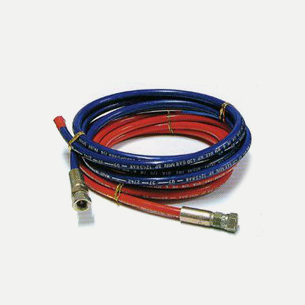
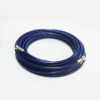
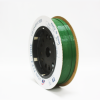
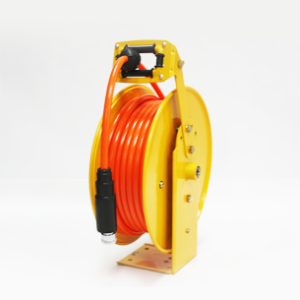
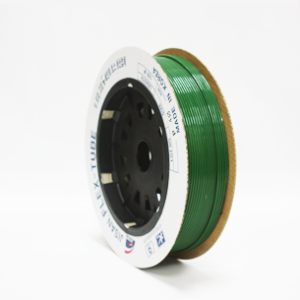
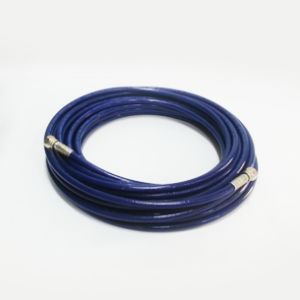
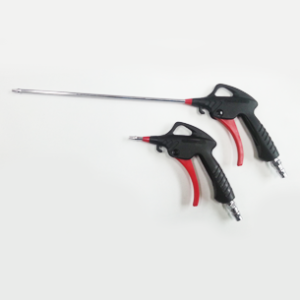
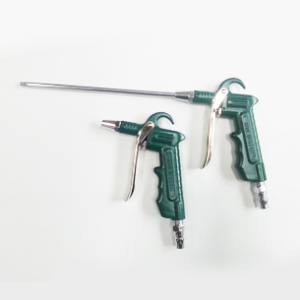
Reviews
There are no reviews yet.